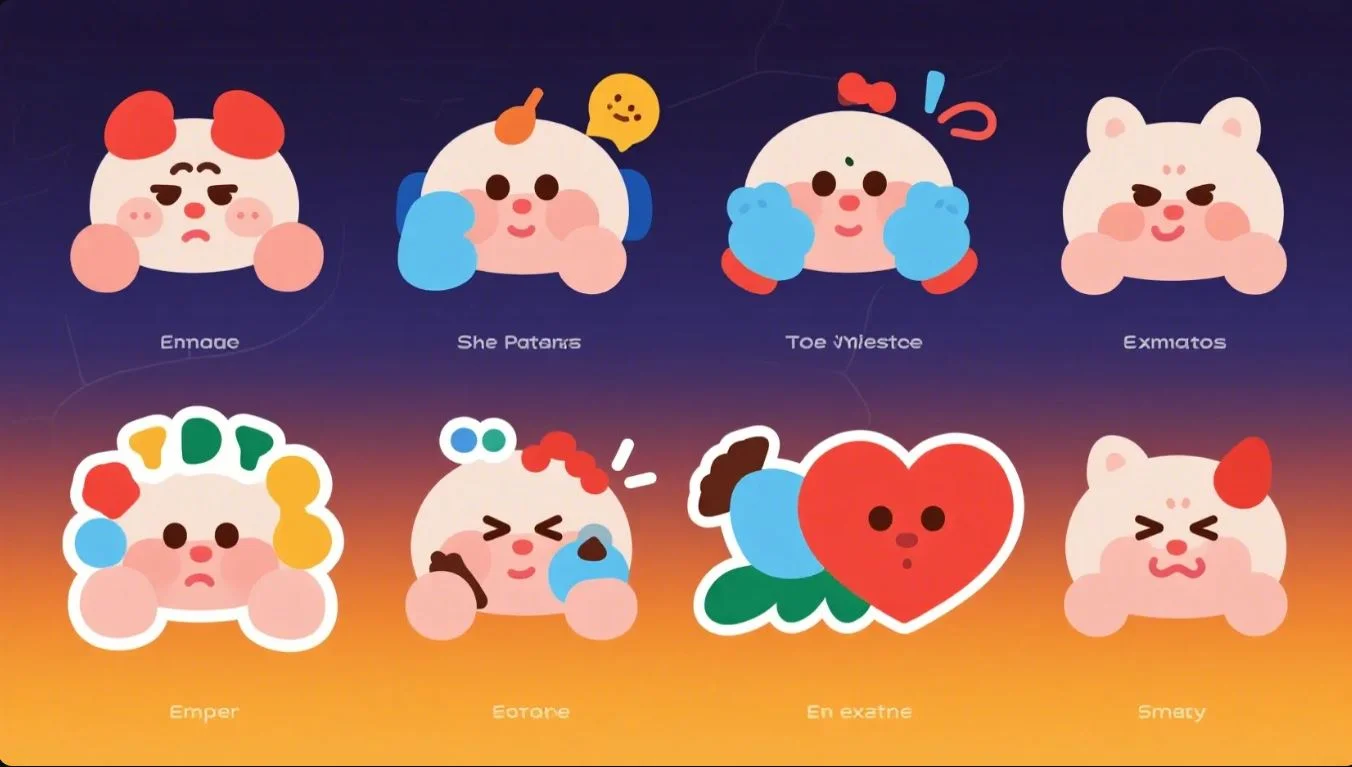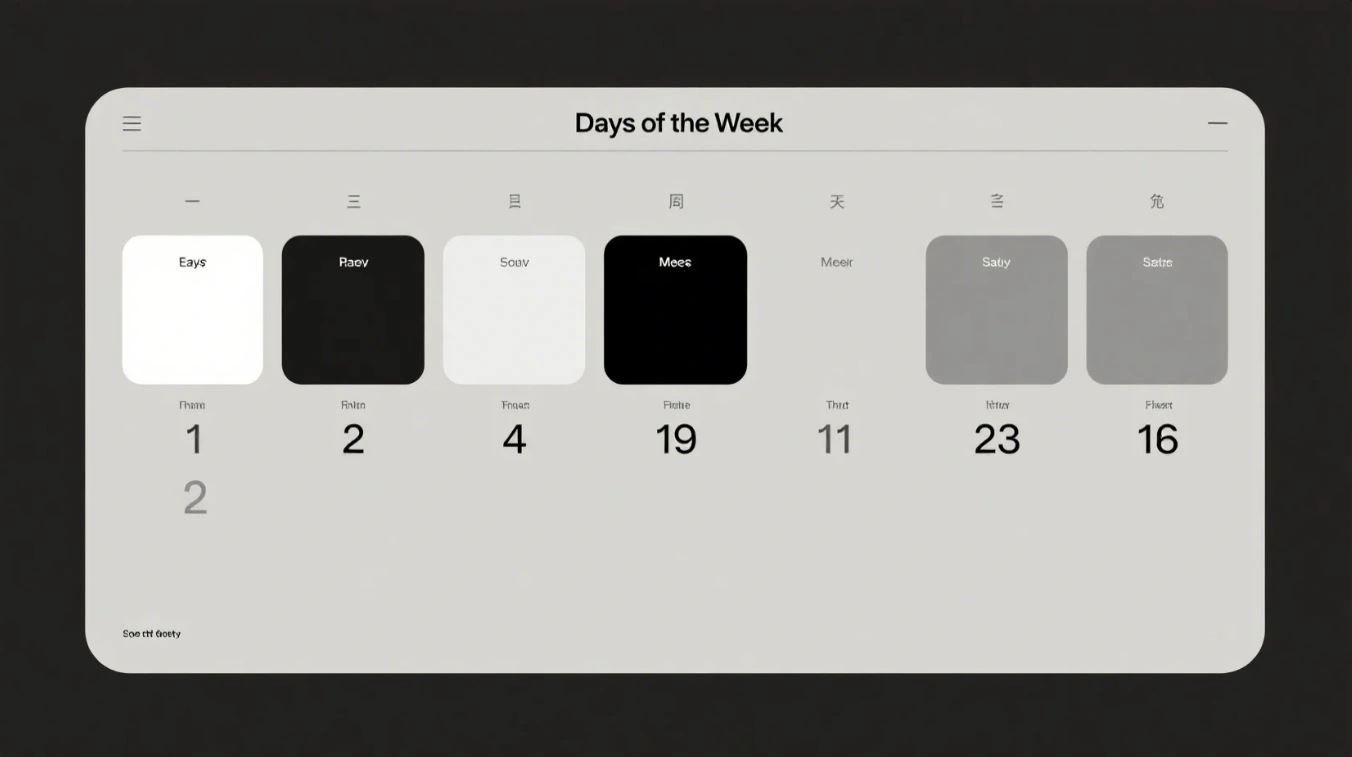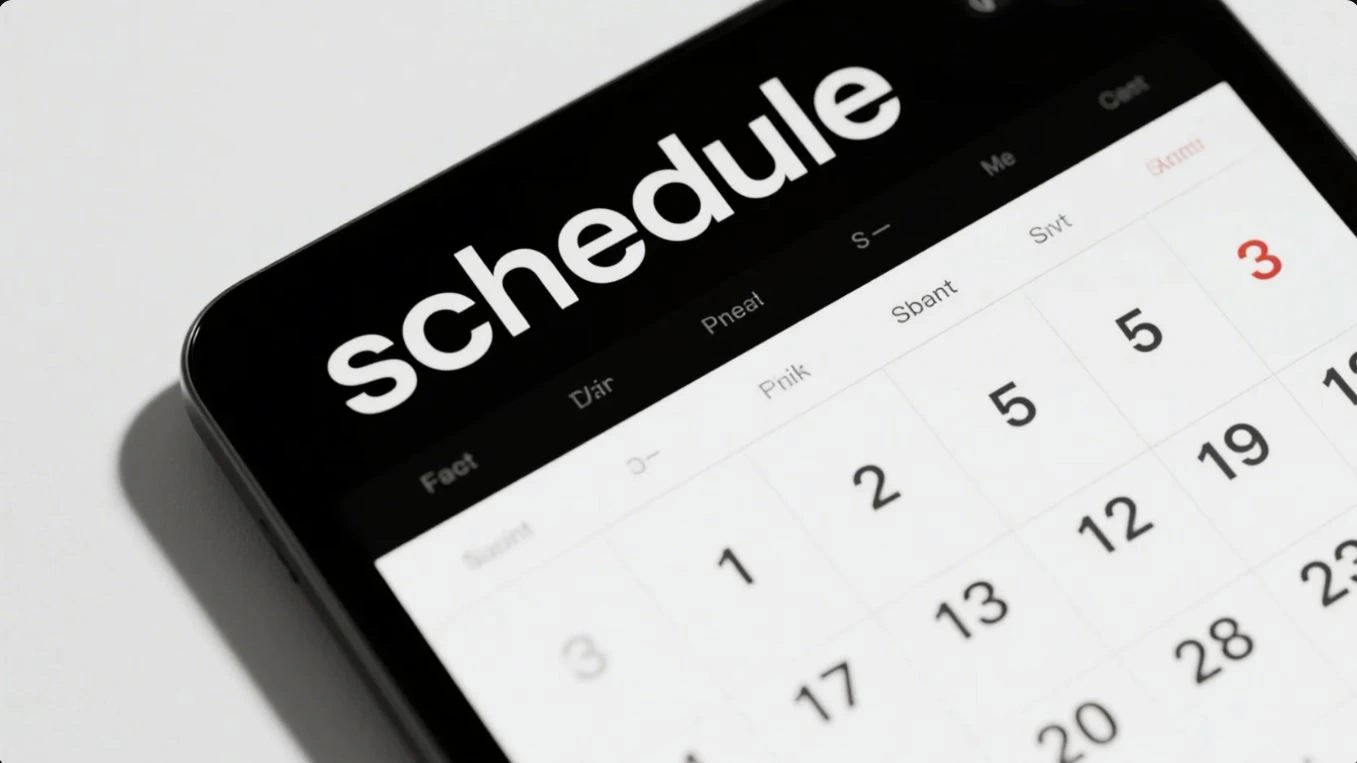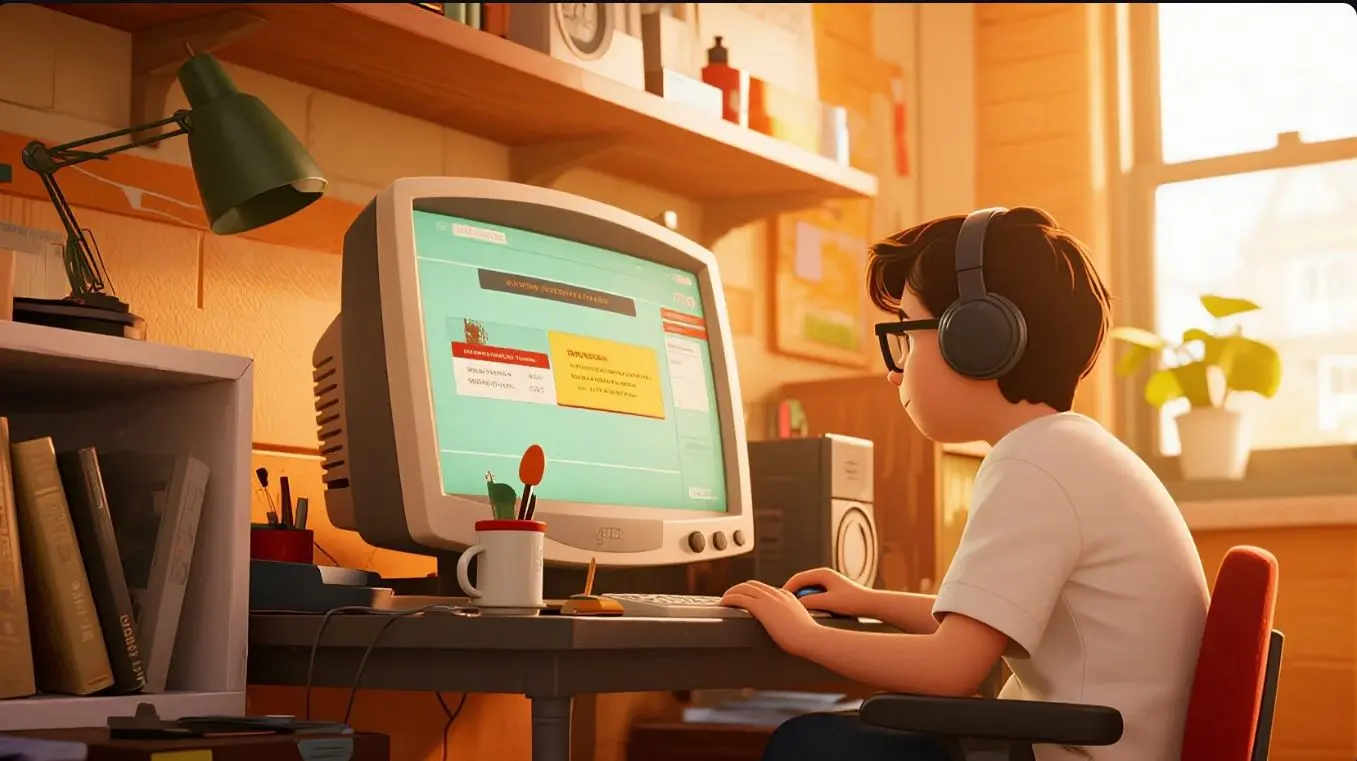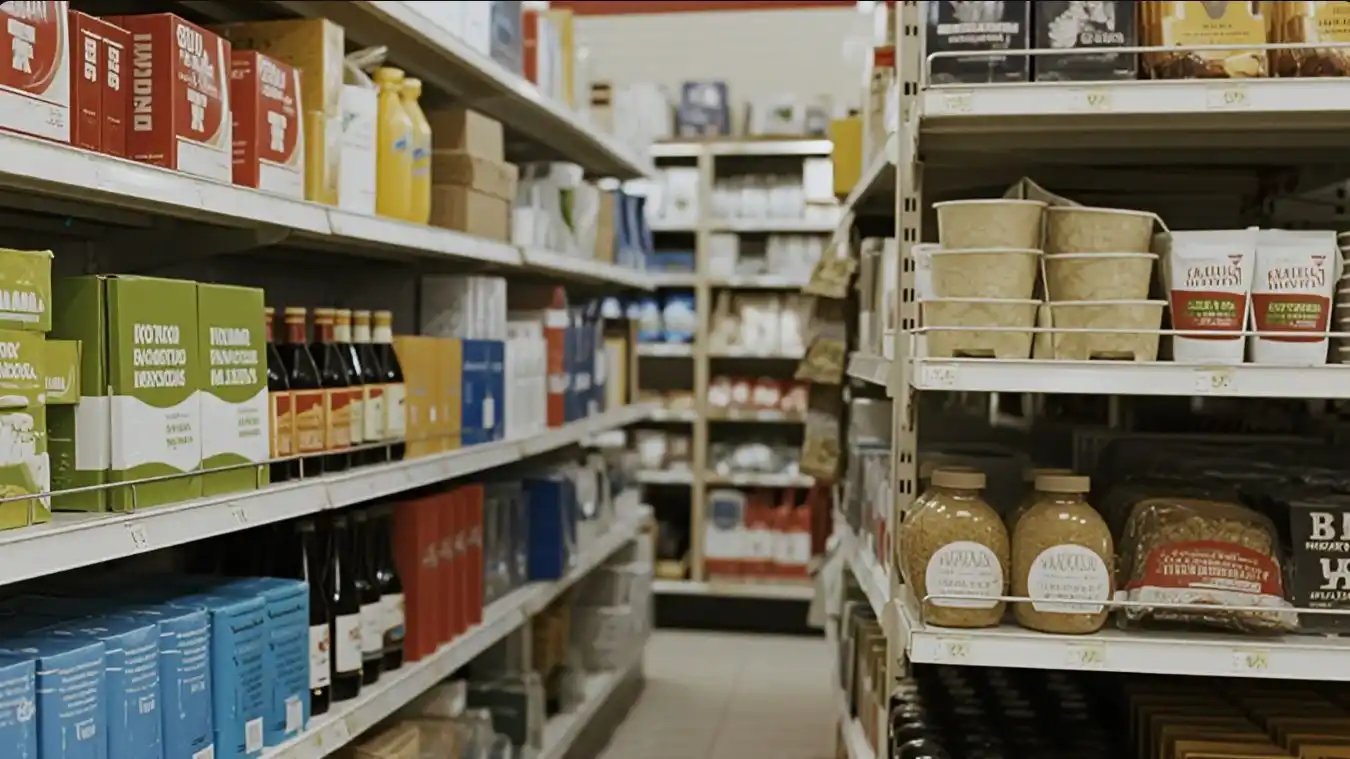Chủ đề “100 từ vựng và cụm từ vựng tiếng Anh về ngành Quản trị dự án xây dựng công trình cấp thoát nước” cung cấp kiến thức cần thiết cho các chuyên gia. Danh sách từ vựng này sẽ giúp bạn nắm vững các thuật ngữ chuyên ngành, hỗ trợ trong việc giao tiếp, quản lý dự án và nâng cao kỹ năng tiếng Anh chuyên môn trong lĩnh vực xây dựng công trình nước.
Từ vựng của ngành nghề Quản trị dự án xây dựng công trình cấp thoát nước
- Water Supply Management – Quản lý cấp nước
- Wastewater Treatment – Xử lý nước thải
- Sewage System – Hệ thống cống rãnh
- Pipeline Construction – Xây dựng đường ống
- Water Distribution Network – Mạng lưới phân phối nước
- Hydraulic Engineering – Kỹ thuật thủy lực
- Stormwater Management – Quản lý nước mưa
- Flood Prevention – Ngăn ngừa lũ lụt
- Water Filtration – Lọc nước
- Pump Station – Trạm bơm
- Water Treatment Plant – Nhà máy xử lý nước
- Drainage System – Hệ thống thoát nước
- Water Quality Monitoring – Giám sát chất lượng nước
- Wastewater Reuse – Tái sử dụng nước thải
- Hydrological Study – Nghiên cứu thủy văn
- Water Storage Facility – Cơ sở lưu trữ nước
- Piping Design – Thiết kế ống dẫn
- Sewer Line – Đường ống cống
- Water Conservation – Bảo tồn nước
- Infrastructure Development – Phát triển cơ sở hạ tầng
- Water Supply Pipeline – Đường ống cấp nước
- Sewerage Treatment – Xử lý nước cống
- Hydraulic Modeling – Mô hình thủy lực
- Construction Management – Quản lý xây dựng
- Water Demand Forecasting – Dự báo nhu cầu nước
- Catchment Area – Khu vực thu nước
- Water System Design – Thiết kế hệ thống cấp nước
- Wastewater Management – Quản lý nước thải
- Drainage Infrastructure – Cơ sở hạ tầng thoát nước
- Water Pumping – Bơm nước
- Pipe Installation – Lắp đặt ống
- Water Supply Scheme – Kế hoạch cấp nước
- Sanitation System – Hệ thống vệ sinh
- Septic Tank – Bể tự hoại
- Water Pipeline Inspection – Kiểm tra đường ống cấp nước
- Wastewater Disposal – Xử lý nước thải
- Water Resource Management – Quản lý tài nguyên nước
- Hydraulic Analysis – Phân tích thủy lực
- Water Efficiency – Hiệu quả sử dụng nước
- Water Demand Management – Quản lý nhu cầu nước
- Sewage Treatment Plant – Nhà máy xử lý nước cống
- Flood Control Measures – Biện pháp kiểm soát lũ
- Water Supply Network – Mạng lưới cấp nước
- Wastewater Collection – Thu gom nước thải
- Water Pressure Control – Kiểm soát áp lực nước
- Storm Drainage – Thoát nước mưa
- Water Metering – Đo lường nước
- Sanitary Sewer – Cống vệ sinh
- Water System Maintenance – Bảo trì hệ thống cấp nước
- Pipeline Inspection – Kiểm tra đường ống
- Water Supply Planning – Lập kế hoạch cấp nước
- Sewage Pumping Station – Trạm bơm nước cống
- Water Treatment Process – Quy trình xử lý nước
- Sewerage Infrastructure – Cơ sở hạ tầng nước cống
- Water Quality Assessment – Đánh giá chất lượng nước
- Rainwater Harvesting – Thu gom nước mưa
- Wastewater Treatment Facility – Cơ sở xử lý nước thải
- Hydraulic Structures – Công trình thủy lực
- Water Resource Planning – Lập kế hoạch tài nguyên nước
- Water Supply Infrastructure – Cơ sở hạ tầng cấp nước
- Sewage Collection System – Hệ thống thu gom nước cống
- Water Treatment Technology – Công nghệ xử lý nước
- Stormwater Drainage System – Hệ thống thoát nước mưa
- Water System Upgrades – Nâng cấp hệ thống cấp nước
- Sewerage System Design – Thiết kế hệ thống cống
- Water Supply Assessment – Đánh giá cấp nước
- Wastewater Treatment Process – Quy trình xử lý nước thải
- Hydraulic Engineering Design – Thiết kế kỹ thuật thủy lực
- Water Distribution System – Hệ thống phân phối nước
- Water Reuse – Tái sử dụng nước
- Pipeline Maintenance – Bảo trì đường ống
- Flood Risk Assessment – Đánh giá rủi ro lũ
- Water System Operations – Vận hành hệ thống cấp nước
- Wastewater Collection System – Hệ thống thu gom nước thải
- Hydraulic Engineering Analysis – Phân tích kỹ thuật thủy lực
- Water Resource Allocation – Phân bổ tài nguyên nước
- Sewage Management – Quản lý nước cống
- Water Supply Operations – Vận hành cấp nước
- Sewage Line Maintenance – Bảo trì đường ống cống
- Wastewater Treatment Equipment – Thiết bị xử lý nước thải
- Water Supply Optimization – Tối ưu hóa cấp nước
- Stormwater Management Plan – Kế hoạch quản lý nước mưa
- Pipe Network Design – Thiết kế mạng lưới ống
- Water System Construction – Xây dựng hệ thống cấp nước
- Sewerage System Maintenance – Bảo trì hệ thống cống
- Water Treatment Efficiency – Hiệu quả xử lý nước
- Water Management Strategy – Chiến lược quản lý nước
- Sewage Treatment Process – Quy trình xử lý nước cống
- Water Supply Requirements – Yêu cầu cấp nước
- Hydraulic Performance – Hiệu suất thủy lực
- Water Supply Regulation – Quy định cấp nước
- Wastewater Analysis – Phân tích nước thải
- Pipe Network Maintenance – Bảo trì mạng lưới ống
- Flood Management Plan – Kế hoạch quản lý lũ
- Water Quality Management – Quản lý chất lượng nước
- Sewage Disposal – Xử lý nước cống
- Water Supply Design – Thiết kế cấp nước
- Wastewater Management Plan – Kế hoạch quản lý nước thải
- Pipeline Integrity – Độ bền của đường ống
- Water Treatment Facility – Cơ sở xử lý nước
Bài viết sử dụng thuật ngữ trên
- Water Supply Management: Efficient water supply management is crucial for maintaining a steady flow of clean water to residents.
- Wastewater Treatment: The wastewater treatment plant uses advanced technology to clean sewage before it is released into the environment.
- Sewage System: Upgrading the sewage system can help reduce the risk of overflow during heavy rain.
- Pipeline Construction: Pipeline construction is a key component in expanding the city’s water distribution network.
- Water Distribution Network: The water distribution network ensures that clean water reaches every home in the community.
- Hydraulic Engineering: Hydraulic engineering principles are applied to design and optimize water flow in large-scale projects.
- Stormwater Management: Effective stormwater management helps prevent flooding and protect urban areas during heavy rains.
- Flood Prevention: Flood prevention measures include constructing barriers and improving drainage systems to protect low-lying areas.
- Water Filtration: Water filtration systems remove impurities and contaminants to ensure safe drinking water.
- Pump Station: The new pump station is designed to enhance water pressure and improve supply reliability.
- Water Treatment Plant: The water treatment plant uses various processes to ensure the water is safe for consumption.
- Drainage System: A well-designed drainage system prevents water accumulation and reduces the risk of property damage.
- Water Quality Monitoring: Regular water quality monitoring is essential to ensure that the water meets safety standards.
- Wastewater Reuse: Wastewater reuse programs can help conserve water by treating and repurposing used water for non-potable applications.
- Hydrological Study: The hydrological study assessed the impact of the new reservoir on the local water table.
- Water Storage Facility: The water storage facility is equipped with large tanks to store water for dry periods.
- Piping Design: The piping design must account for pressure variations and potential leaks to ensure a reliable water supply.
- Sewer Line: The sewer line upgrade will improve the efficiency of waste removal and reduce blockages.
- Water Conservation: Water conservation efforts are essential to address the challenges of limited water resources.
- Infrastructure Development: Infrastructure development includes building new pipelines and upgrading existing facilities to meet growing demand.
- Water Supply Pipeline: The installation of a new water supply pipeline will increase the capacity to serve additional households.
- Sewerage Treatment: Sewerage treatment processes are crucial for converting wastewater into a harmless byproduct.
- Hydraulic Modeling: Hydraulic modeling helps predict the flow and behavior of water through the new drainage system.
- Construction Management: Effective construction management ensures that projects are completed on time and within budget.
- Water Demand Forecasting: Accurate water demand forecasting helps in planning for future water supply needs.
- Catchment Area: The catchment area collects and channels rainwater to the reservoirs and treatment facilities.
- Water System Design: The water system design includes all components necessary to deliver clean water from the source to the end-user.
- Wastewater Management: Wastewater management involves the collection, treatment, and disposal of used water to protect public health.
- Drainage Infrastructure: Upgrading the drainage infrastructure can prevent waterlogging and improve flood resilience.
- Water Pumping: Water pumping stations are used to move water through the distribution network efficiently.
- Pipe Installation: Proper pipe installation is essential to prevent leaks and ensure the system operates smoothly.
- Water Supply Scheme: The water supply scheme outlines the methods and infrastructure required to deliver water to the community.
- Sanitation System: A robust sanitation system is necessary to manage waste and maintain public health standards.
- Septic Tank: The septic tank treats and decomposes sewage on-site, reducing the burden on municipal treatment facilities.
- Water Pipeline Inspection: Regular water pipeline inspection helps detect issues early and prevent major failures.
- Wastewater Disposal: Safe wastewater disposal practices prevent contamination and protect the environment.
- Water Resource Management: Effective water resource management ensures sustainable use of water for various needs.
- Hydraulic Analysis: Hydraulic analysis helps determine the optimal design for water flow and pressure control.
- Water Efficiency: Improving water efficiency reduces waste and lowers operational costs for water utilities.
- Water Demand Management: Water demand management strategies help balance supply and consumption, especially during droughts.
- Sewage Treatment Plant: The sewage treatment plant processes wastewater before it is safely released into the environment.
- Flood Control Measures: Implementing flood control measures can protect communities from the impacts of severe weather events.
- Water Supply Network: The water supply network includes all the infrastructure needed to transport water from sources to consumers.
- Wastewater Collection: Wastewater collection systems gather used water from homes and businesses for treatment.
- Water Pressure Control: Water pressure control systems maintain consistent pressure throughout the distribution network.
- Storm Drainage: Effective storm drainage systems prevent water accumulation on roads and reduce the risk of flooding.
- Water Metering: Water metering is used to measure consumption and manage billing for water services.
- Sanitary Sewer: The sanitary sewer system transports waste away from homes to treatment facilities.
- Water System Maintenance: Regular water system maintenance is necessary to ensure the reliability and longevity of the infrastructure.
- Pipeline Inspection: Pipeline inspection involves checking for damage and ensuring the integrity of the water distribution network.
- Water Supply Planning: Water supply planning involves forecasting future needs and designing infrastructure to meet those needs.
- Sewage Pumping Station: The sewage pumping station helps move wastewater through the sewer system to the treatment plant.
- Water Treatment Process: The water treatment process includes several stages to remove contaminants and make water safe for consumption.
- Sewerage Infrastructure: Sewerage infrastructure includes the pipes, pumps, and treatment facilities needed to manage wastewater.
- Water Quality Assessment: Water quality assessment ensures that the water supply meets health and safety standards.
- Rainwater Harvesting: Rainwater harvesting systems collect and store rainwater for use in irrigation and other non-potable applications.
- Wastewater Treatment Facility: The wastewater treatment facility processes used water to remove impurities before discharge.
- Hydraulic Structures: Hydraulic structures such as dams and weirs control water flow and storage in river systems.
- Water Resource Planning: Water resource planning involves managing water supplies to meet current and future demands.
- Water Supply Infrastructure: Water supply infrastructure includes all the components necessary to deliver water from sources to end-users.
- Sewage Collection System: The sewage collection system gathers wastewater from homes and businesses for treatment.
- Water Treatment Technology: Advanced water treatment technology improves the efficiency and effectiveness of purifying water.
- Stormwater Drainage System: The stormwater drainage system directs excess rainwater away from streets and properties.
- Water System Upgrades: Water system upgrades include replacing old pipes and expanding capacity to improve service delivery.
- Sewerage System Design: The sewerage system design outlines the layout and components of the sewage infrastructure.
- Water Supply Assessment: A water supply assessment evaluates the capacity and reliability of the existing infrastructure.
- Wastewater Treatment Process: The wastewater treatment process involves several stages to remove solids, chemicals, and biological contaminants.
- Hydraulic Engineering Design: Hydraulic engineering design focuses on creating structures that manage water flow and pressure effectively.
- Water Distribution System: The water distribution system delivers treated water to homes and businesses through a network of pipes.
- Water Reuse: Water reuse involves treating and repurposing used water for beneficial purposes, reducing the demand on fresh water sources.
- Pipeline Maintenance: Regular pipeline maintenance is crucial to prevent leaks and ensure the efficiency of the water supply system.
- Flood Risk Assessment: A flood risk assessment identifies potential flood hazards and informs mitigation strategies.
- Water System Operations: Water system operations include managing the daily functions and monitoring the performance of water infrastructure.
- Wastewater Collection System: The wastewater collection system transports used water from various sources to treatment facilities.
- Hydraulic Engineering Analysis: Hydraulic engineering analysis involves studying water flow dynamics to optimize system design.
- Water Resource Allocation: Water resource allocation ensures that available water is distributed effectively among competing needs.
- Sewage Management: Sewage management involves the collection, treatment, and disposal of wastewater to protect public health.
- Water Supply Operations: Water supply operations encompass all activities related to delivering clean water to consumers.
- Sewage Line Maintenance: Sewage line maintenance is necessary to prevent blockages and ensure the smooth flow of wastewater.
- Wastewater Treatment Equipment: Wastewater treatment equipment includes tanks, pumps, and filters used to process used water.
- Water Supply Optimization: Water supply optimization focuses on improving efficiency and reducing costs in the distribution network.
- Stormwater Management Plan: A stormwater management plan outlines strategies to control and manage runoff from rainfall.
- Pipe Network Design: Pipe network design involves creating a layout for pipes to efficiently distribute water throughout a system.
- Water System Construction: Water system construction includes building and installing infrastructure to support water distribution and treatment.
- Sewerage System Maintenance: Regular maintenance of the sewerage system is essential to prevent blockages and ensure efficient operation.
- Water Treatment Efficiency: Improving water treatment efficiency helps ensure that the process removes contaminants effectively.
- Water Management Strategy: A water management strategy outlines the approach to managing water resources and infrastructure.
- Sewage Treatment Process: The sewage treatment process involves several stages to treat and purify wastewater before disposal.
- Water Supply Requirements: Understanding water supply requirements helps in planning and designing infrastructure to meet demand.
- Hydraulic Performance: Hydraulic performance refers to how well water flow and pressure are managed in the system.
- Water Supply Regulation: Water supply regulation sets standards and rules for the management and distribution of water resources.
- Wastewater Analysis: Wastewater analysis tests used water for contaminants to ensure it is treated properly before disposal.
- Pipe Network Maintenance: Pipe network maintenance involves inspecting and repairing pipes to prevent leaks and ensure system reliability.
- Flood Management Plan: A flood management plan includes strategies to reduce the impact of flooding and protect communities.
- Water Quality Management: Water quality management ensures that the water supplied to consumers meets safety and health standards.
- Sewage Disposal: Sewage disposal involves safely removing and treating wastewater to protect the environment.
- Water Supply Design: Water supply design includes planning and creating systems to deliver clean water to users.
- Wastewater Management Plan: A wastewater management plan outlines the procedures for handling and treating wastewater.
- Pipeline Integrity: Pipeline integrity refers to the condition of the pipes and their ability to function without leaks or failures.
- Water Treatment Facility: The water treatment facility processes raw water to make it safe for consumption and use.
Bài tập
- Efficient __________ is crucial for maintaining a steady flow of clean water to residents.
- The __________ plant uses advanced technology to clean sewage before it is released into the environment.
- Upgrading the __________ can help reduce the risk of overflow during heavy rain.
- __________ is a key component in expanding the city’s water distribution network.
- The __________ ensures that clean water reaches every home in the community.
- __________ principles are applied to design and optimize water flow in large-scale projects.
- Effective __________ helps prevent flooding and protect urban areas during heavy rains.
- __________ measures include constructing barriers and improving drainage systems to protect low-lying areas.
- __________ systems remove impurities and contaminants to ensure safe drinking water.
- The new __________ is designed to enhance water pressure and improve supply reliability.
- The __________ uses various processes to ensure the water is safe for consumption.
- A well-designed __________ prevents water accumulation and reduces the risk of property damage.
- Regular __________ is essential to ensure that the water meets safety standards.
- __________ programs can help conserve water by treating and repurposing used water for non-potable applications.
- The __________ assessed the impact of the new reservoir on the local water table.
- The __________ is equipped with large tanks to store water for dry periods.
- The __________ must account for pressure variations and potential leaks to ensure a reliable water supply.
- The __________ upgrade will improve the efficiency of waste removal and reduce blockages.
- __________ efforts are essential to address the challenges of limited water resources.
- __________ includes building new pipelines and upgrading existing facilities to meet growing demand.
- The installation of a new __________ will increase the capacity to serve additional households.
- __________ processes are crucial for converting wastewater into a harmless byproduct.
- __________ helps predict the flow and behavior of water through the new drainage system.
- Effective __________ ensures that projects are completed on time and within budget.
- Accurate __________ helps in planning for future water supply needs.
- The __________ collects and channels rainwater to the reservoirs and treatment facilities.
- The __________ includes all components necessary to deliver clean water from the source to the end-user.
- __________ involves the collection, treatment, and disposal of used water to protect public health.
- Upgrading the __________ can prevent waterlogging and improve flood resilience.
- __________ stations are used to move water through the distribution network efficiently.
- Proper __________ is essential to prevent leaks and ensure the system operates smoothly.
- The __________ outlines the methods and infrastructure required to deliver water to the community.
- A robust __________ is necessary to manage waste and maintain public health standards.
- The __________ treats and decomposes sewage on-site, reducing the burden on municipal treatment facilities.
- Regular __________ helps detect issues early and prevent major failures.
- Safe __________ practices prevent contamination and protect the environment.
- Effective __________ ensures sustainable use of water for various needs.
- __________ helps determine the optimal design for water flow and pressure control.
- Improving __________ reduces waste and lowers operational costs for water utilities.
- __________ strategies help balance supply and consumption, especially during droughts.
- The __________ processes wastewater before it is safely released into the environment.
- Implementing __________ can protect communities from the impacts of severe weather events.
- The __________ includes all the infrastructure needed to transport water from sources to consumers.
- __________ systems gather used water from homes and businesses for treatment.
- __________ systems maintain consistent pressure throughout the distribution network.
- Effective __________ systems prevent water accumulation on roads and reduce the risk of flooding.
- __________ is used to measure consumption and manage billing for water services.
- The __________ system transports waste away from homes to treatment facilities.
- Regular __________ is necessary to ensure the reliability and longevity of the infrastructure.
- __________ involves checking for damage and ensuring the integrity of the water distribution network.
- __________ involves forecasting future needs and designing infrastructure to meet those needs.
- The __________ helps move wastewater through the sewer system to the treatment plant.
- The __________ includes several stages to remove contaminants and make water safe for consumption.
- __________ includes the pipes, pumps, and treatment facilities needed to manage wastewater.
- __________ ensures that the water supplied to consumers meets safety and health standards.
- __________ systems collect and store rainwater for use in irrigation and other non-potable applications.
- The __________ processes used water to remove impurities before discharge.
- __________ such as dams and weirs control water flow and storage in river systems.
- __________ involves managing water supplies to meet current and future demands.
- __________ includes all the components necessary to deliver water from sources to end-users.
- The __________ gathers wastewater from homes and businesses for treatment.
- Advanced __________ improves the efficiency and effectiveness of purifying water.
- The __________ directs excess rainwater away from streets and properties.
- __________ include replacing old pipes and expanding capacity to improve service delivery.
- The __________ outlines the layout and components of the sewage infrastructure.
- A __________ evaluates the capacity and reliability of the existing infrastructure.
- The __________ involves several stages to remove solids, chemicals, and biological contaminants.
- __________ focuses on creating structures that manage water flow and pressure effectively.
- The __________ delivers treated water to homes and businesses through a network of pipes.
- __________ involves treating and repurposing used water for beneficial purposes, reducing the demand on fresh water sources.
- Regular __________ is crucial to prevent leaks and ensure the efficiency of the water supply system.
- A __________ identifies potential flood hazards and informs mitigation strategies.
- __________ include managing the daily functions and monitoring the performance of water infrastructure.
- The __________ transports used water from various sources to treatment facilities.
- __________ involves studying water flow dynamics to optimize system design.
- __________ ensures that available water is distributed effectively among competing needs.
- __________ involves the collection, treatment, and disposal of wastewater to protect public health.
- __________ encompasses all activities related to delivering clean water to consumers.
- __________ is necessary to prevent blockages and ensure the smooth flow of wastewater.
- __________ includes tanks, pumps, and filters used to process used water.
- __________ focuses on improving efficiency and reducing costs in the distribution network.
- A __________ outlines strategies to control and manage runoff from rainfall.
- __________ involves creating a layout for pipes to efficiently distribute water throughout a system.
- __________ includes building and installing infrastructure to support water distribution and treatment.
- Regular __________ is essential to prevent blockages and ensure efficient operation.
- Improving __________ helps ensure that the process removes contaminants effectively.
- A __________ outlines the approach to managing water resources and infrastructure.
- The __________ involves several stages to treat and purify wastewater before disposal.
- Understanding __________ helps in planning and designing infrastructure to meet demand.
- __________ refers to how well water flow and pressure are managed in the system.
- __________ sets standards and rules for the management and distribution of water resources.
- __________ tests used water for contaminants to ensure it is treated properly before disposal.
- __________ involves inspecting and repairing pipes to prevent leaks and ensure system reliability.
- A __________ includes strategies to reduce the impact of flooding and protect communities.
- __________ ensures that the water supplied to consumers meets safety and health standards.
- __________ involves safely removing and treating wastewater to protect the environment.
- __________ includes planning and creating systems to deliver clean water to users.
- A __________ outlines the procedures for handling and treating wastewater.
- __________ refers to the condition of the pipes and their ability to function without leaks or failures.
- The __________ processes raw water to make it safe for consumption and use.
Đáp án
- Water Supply Management
- Wastewater Treatment
- Sewage System
- Pipeline Construction
- Water Distribution Network
- Hydraulic Engineering
- Stormwater Management
- Flood Prevention
- Water Filtration
- Pump Station
- Water Treatment Plant
- Drainage System
- Water Quality Monitoring
- Wastewater Reuse
- Hydrological Study
- Water Storage Facility
- Piping Design
- Sewer Line
- Water Conservation
- Infrastructure Development
- Water Supply Pipeline
- Sewage Treatment
- Hydraulic Modeling
- Construction Management
- Water Demand Forecasting
- Catchment Area
- Water System Design
- Wastewater Management
- Drainage Infrastructure
- Water Pumping
- Pipe Installation
- Water Supply Scheme
- Sanitation System
- Septic Tank
- Water Pipeline Inspection
- Wastewater Disposal
- Water Resource Management
- Hydraulic Analysis
- Water Efficiency
- Water Demand Management
- Sewage Treatment Plant
- Flood Control Measures
- Water Supply Network
- Wastewater Collection
- Water Pressure Control
- Storm Drainage
- Water Metering
- Sanitary Sewer
- Water System Maintenance
- Pipeline Inspection
- Water Supply Planning
- Sewage Pumping Station
- Water Treatment Process
- Sewerage Infrastructure
- Water Quality Assessment
- Rainwater Harvesting
- Wastewater Treatment Facility
- Hydraulic Structures
- Water Resource Planning
- Water Supply Infrastructure
- Sewage Collection System
- Water Treatment Technology
- Stormwater Drainage System
- Water System Upgrades
- Sewerage System Design
- Water Supply Assessment
- Wastewater Treatment Process
- Hydraulic Engineering Design
- Water Distribution System
- Water Reuse
- Pipeline Maintenance
- Flood Risk Assessment
- Water System Operations
- Wastewater Collection System
- Hydraulic Engineering Analysis
- Water Resource Allocation
- Sewage Management
- Water Supply Operations
- Sewage Line Maintenance
- Wastewater Treatment Equipment
- Water Supply Optimization
- Stormwater Management Plan
- Pipe Network Design
- Water System Construction
- Sewerage System Maintenance
- Water Treatment Efficiency
- Water Management Strategy
- Sewage Treatment Process
- Water Supply Requirements
- Hydraulic Performance
- Water Supply Regulation
- Wastewater Analysis
- Pipeline Network Maintenance
- Flood Management Plan
- Water Quality Management
- Sewage Disposal
- Water Supply Design
- Wastewater Management Plan
- Pipeline Integrity
- Water Treatment Facility


